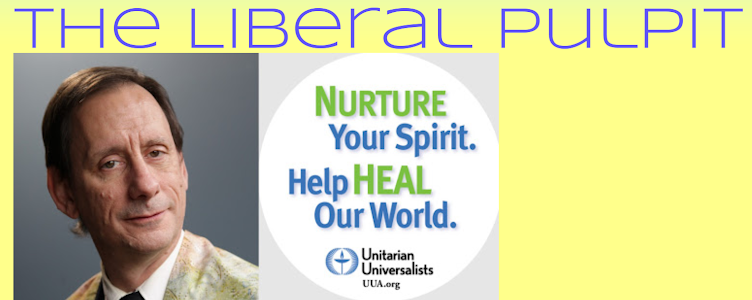"Church! Huh! What Is It Good For?" part 2
“People who frequently participate together in religious rituals achieve a feeling of community that enhances their ability to cooperate and avoid conflict. Even though they may not be conscious of it, they also are able to monitor one another for the sincerity of their commitment, thus making participation in religious rituals a credible signal of commitment.” (William Irons, 2001, 364)That's where religion comes from. Shared rituals would have included music, drumming, and dance, and a variety of ritual behaviors to perform and watch others perform. Sacred stories supported the group's moral code and reinforced the group's identity.
And a third thing: Early humans attributed a stronger sense of agency than most modern humans do to trees, rivers, mountains, animals, sky, and, perhaps, "reality as a whole." They understood these features of their world to have beliefs, desires, and various means for effecting their desires. They understood trees and rocks and sky to be watching them. This probably triggered the same parts of the brain that account for gossip's effectiveness. Feeling watched made them more likely to "stay in line."
Through the rituals, the stories -- and this sense of being watched and accountable even when other people aren’t around to see -- religion is a cohesive power.
This shows up in studies of communes – communities that hold property in common. Communes often do not last long: if you were a young adult in the 1960s, you may have some direct experience of that. They tend to fall apart because the level of trust and cooperation required is just so difficult to maintain. Studies have found, though, that “communes that base their existence on religious ideals tend to last roughly four times as long on average as do those that base their existence on a secular ideology.” Groups with shared rituals and sacred stories cohere better. Marxist or Skinnerian Behaviorist communes could have benefited from some good hymns -- as well as other features of religion.
So here’s the upshot: Religion is an adaptive strategy fostering group cohesion in larger groups than can be managed by gossip alone.
Religion gives us a sense of US. The corollary is that it also gives us a sense of THEM – a feeling that those who don’t participate with us in our rituals and story-telling are different, are other, and dangerous.
So here’s the further upshot: We have religion because we had war. War places a premium on group cohesion, and “religion” is the rituals and stories that produced what was needed. War! (Huh!) Church! (Huh!) What are they good for? Each other!
It’s no wonder that human history is filled with wars over religion. This fact once seemed to me ironic and perverse. Why do people have wars over religion, when the religion on both sides teaches peace? But it's hardly surprising that an adaptation for succeeding in war would play a role in prompting us to go to war.
Part Two: What Religion Does Today
Faith community meets real human needs. It feeds people spiritually. But it has also facilitated war, from its very beginning. And, more often than not, it is related to social problems. A recent study in The Journal of Religion and Society did a large-scale cross-cultural comparative analysis, taking into account key indicators of societal well-being for 800 million people in the U.S., Japan, and western Europe. The study found that higher levels of religiosity correlated with lower levels of social well-being. The U.S., where church attendance is high, has had more school shootings than all of Europe and Japan combined. The study found:
“in general, higher rates of belief in and worship of a creator correlate with higher rates of homicide, juvenile and early adult mortality, STD infection rates, teen pregnancy, and abortion. The most theistic prosperous democracy, the U.S., is . . . almost always the most dysfunctional of the developing democracies, sometimes spectacularly so. The view of the U.S. as a ‘shining city on the hill’ to the rest of the world is falsified when it comes to basic measures of societal health.” (Gregory S. Paul, “Cross-National Correlations of Quantifiable Societal Health with Popular Religiosity and Secularism in the Prosperous Democracies,” The Journal of Religion and Society, 7, 2005. View complete article: HERE.)Europe scores lower than the US on measures of religiosity and higher than the US on measures of social health and well-being. In Europe, a lot fewer people are in prison -- and a lot fewer people are in church.
Religion reinforces a moral code, binds members into community through ritual and story, and triggers our brains to perceive a transcendent, interconnected whole beyond and more deeply satisfying than the concerns of personality and ego. But at what social cost? Is there a way for religion to be more pro-social? Yes, there is.
Next: Evolving a Better Religion
* * *
This is part 2 of 3 of "Church! Huh! What Is It Good For?"
See also
Part 1: Where Religion Came From
Part 3: Evolving Religion


No comments:
Post a Comment